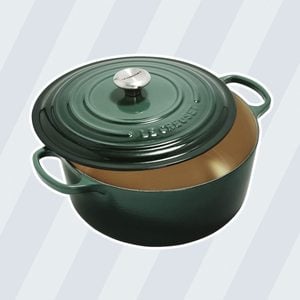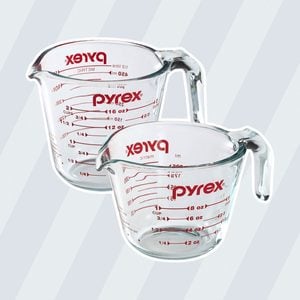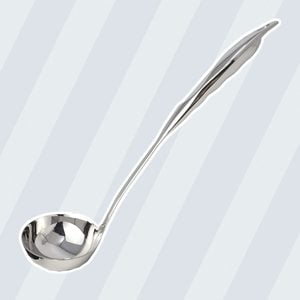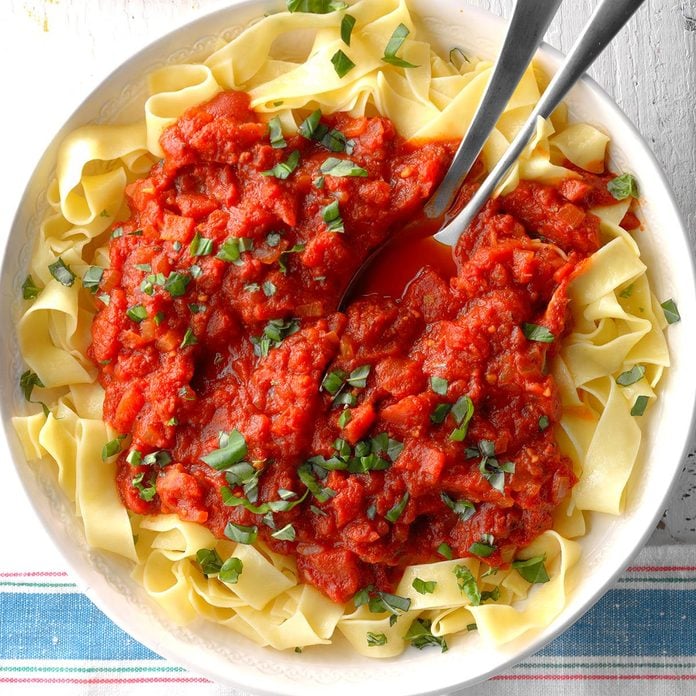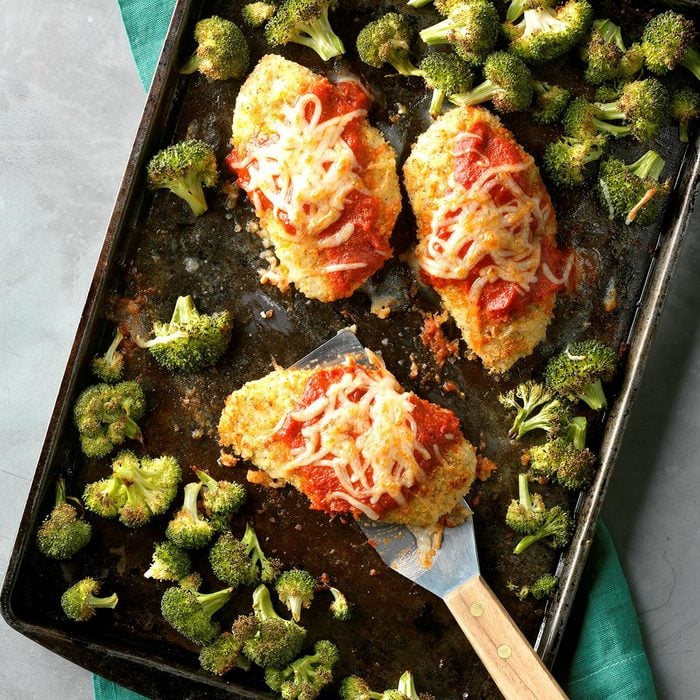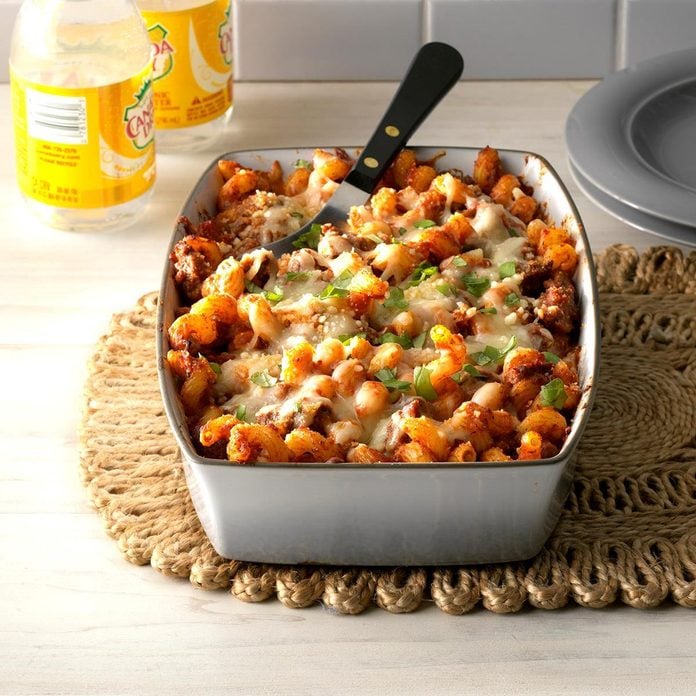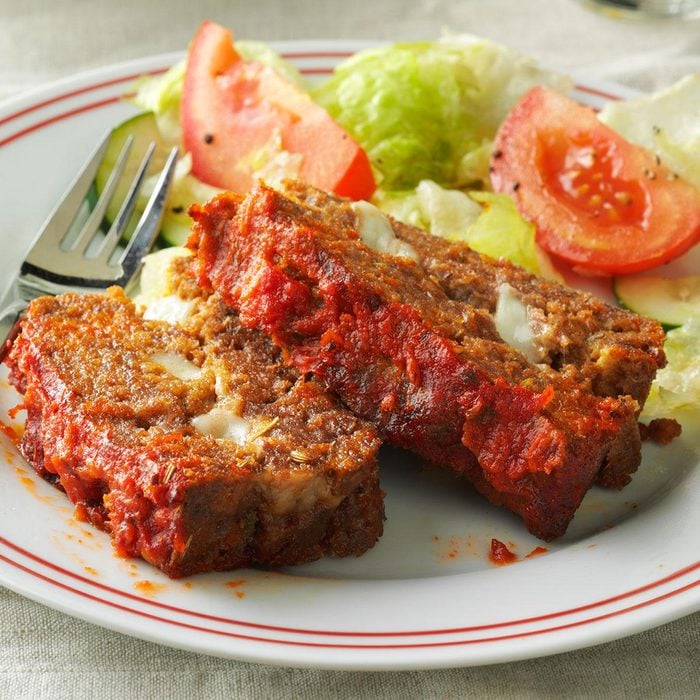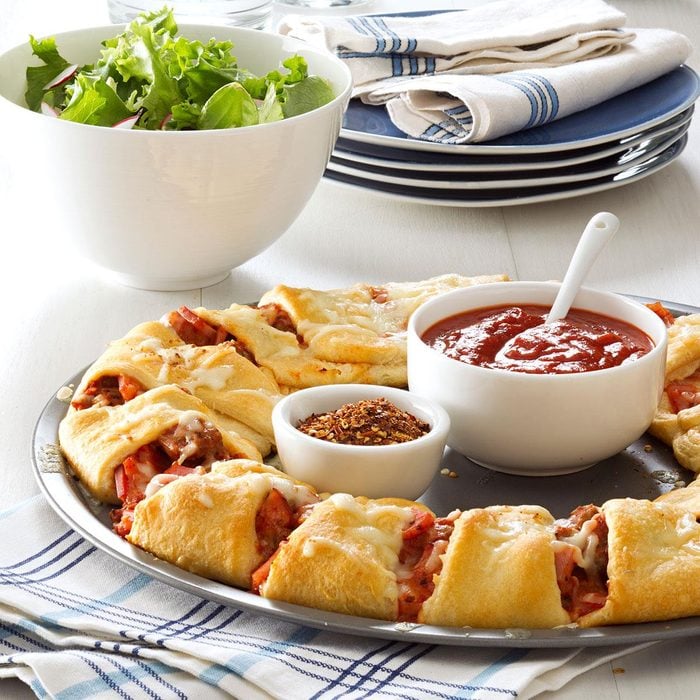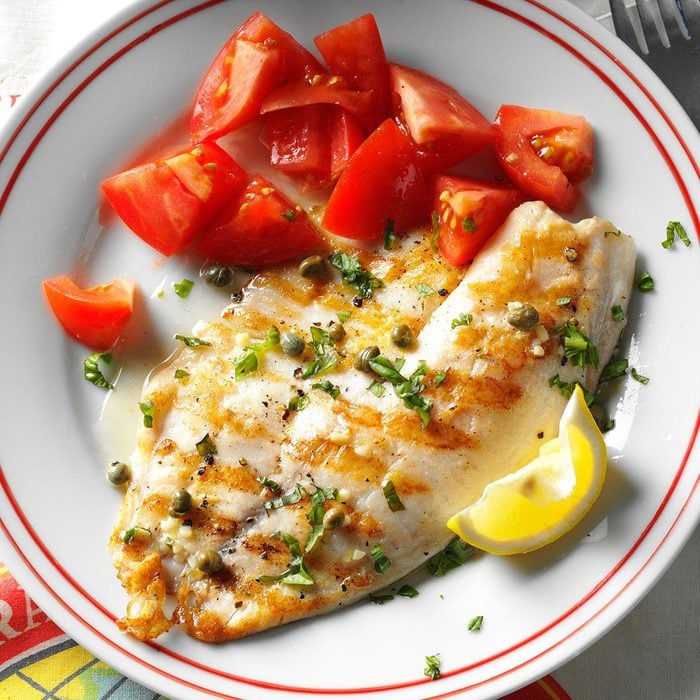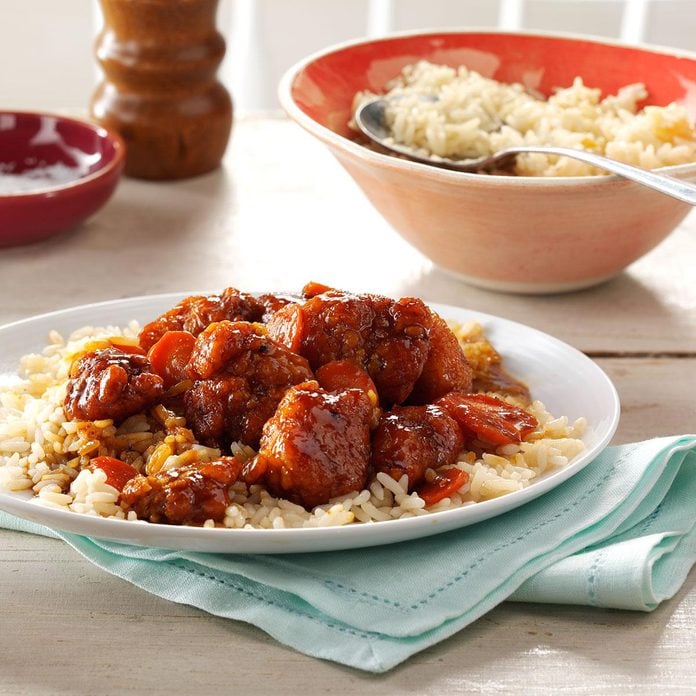The Ultimate Guide to Pasta Sauce
Updated: Apr. 05, 2024
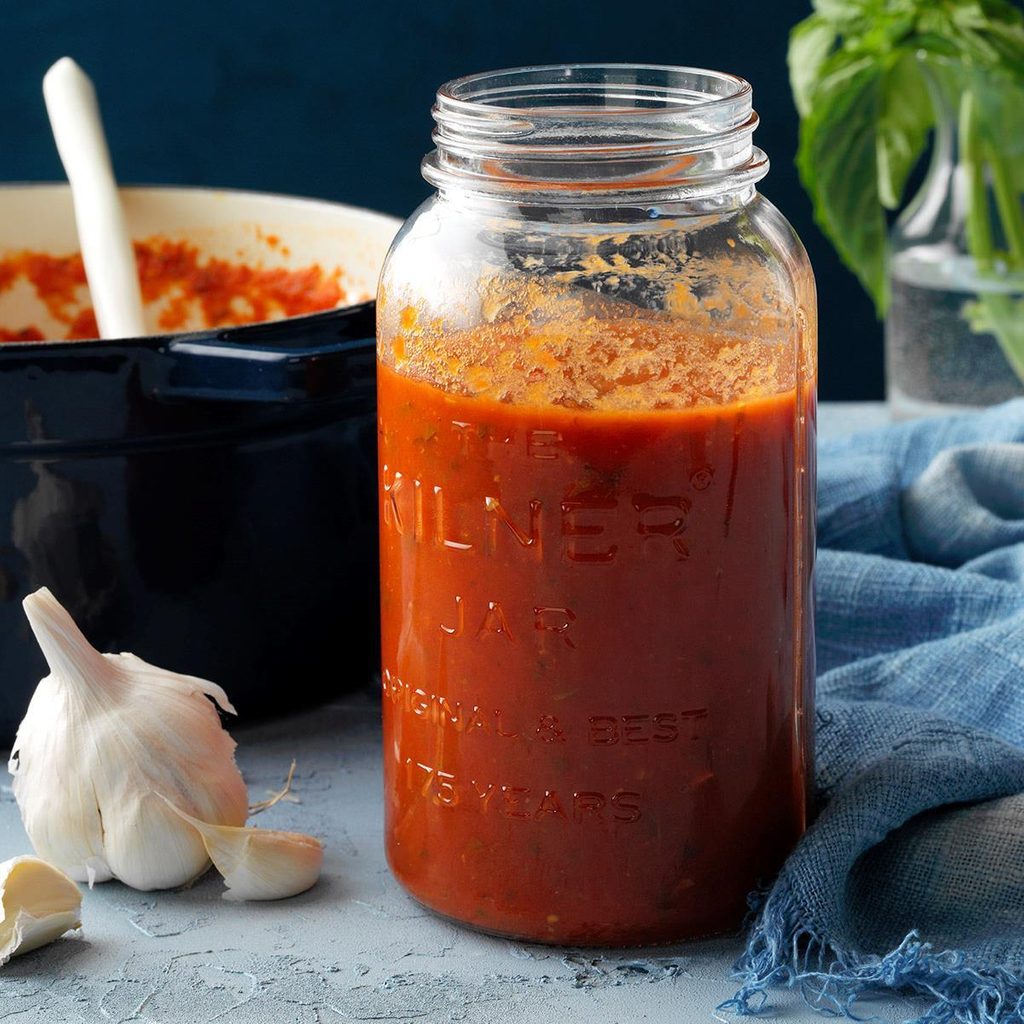
Whether you're craving a traditional tomato sauce, a creamy Alfredo or a summery pesto, we're here to help you make your best pasta sauce ever.
Saucy pasta is one of our favorite meals. It’s inexpensive, comforting and an all-around crowd pleaser. Plus, there are so many tasty ways to make it! Read on to discover everything you need to know about homemade pasta sauce—from different types to must-have tools.
All the Different Types of Pasta Sauce
Just like there are never-ending shapes and styles of pasta, there are tons of delicious sauces to choose from, too. Here are some of our favorites.
Red sauce. Perhaps the most popular of all pasta sauces, red sauce is a deeply flavored, slow-simmered pasta sauce with a tomato base. Marinara also falls into this category, but takes less time to make. Learn more about marinara vs. tomato sauce.
Alfredo sauce. In Italy, traditional Alfredo sauce relies on just butter and Parmesan cheese, emulsified with hot pasta water to create a silky, savory sauce. In the U.S., most Alfredos are a bit richer, adding in heavy cream, garlic and other flavors, like in this Alfredo sauce recipe.
Pesto. This sauce tastes like summer. Traditional pesto is made with garlic, pine nuts, Parmesan and tons of fresh basil leaves, all processed with olive oil until smooth. But you can buy pesto from the store or find plenty of variations, including this delightful parsley pesto recipe. And if you’re not in the mood for pasta? Try one of these other recipes using pesto. Also, don’t forget to take a look at our collection of the best store-bought pestos.
Arrabbiata sauce. For a spicy sauce, turn to Arrabbiata. This hearty bite uses dried red chile peppers to turn up the heat.
Vodka sauce. Pass the booze! As its name implies, vodka sauce relies on a familiar spirit to get its classic taste. You’ll also find ingredients like tomatoes and heavy cream.
Clam sauce. Just like the popular chowder, you can find several variations of clam sauce. Red clam sauce, for example, uses tomatoes, while this herbed linguine with clam sauce recipe is oil-based.
Bolognese. Hearty and packed with meat, Bolognese is thick, creamy and slow-simmered to create a decadent, flavor-rich sauce.
Fra Diavolo. Commonly served with seafood, like in this shrimp Fra Diavolo, this sauce is a spicy tomato-based concoction similar to Arrabbiata.
Cheese sauce. Pass the mac! This sauce is a reiteration of béchamel (or white sauce), with the addition of cheese. For a traditional take, add Parmesan and gruyère to make a classic Mornay sauce. Or, for an Americanized version, toss in cheddar, cream cheese, Monterey Jack—any cheese you’d like!
Vegan pasta sauce. Many of the classic pasta sauces on this list can be made to fit dietary restrictions. If you’re following a dairy-free or plant-based diet, consider a vegan Alfredo sauce made with soaked cashews, a vegetable-packed tomato sauce or any of these other vegan pasta sauce recipes. For other diets, check out our healthy pasta sauce recipes.
Still hungry? Here’s more on how to use every type of pasta sauce.
How to Make Pasta Sauce
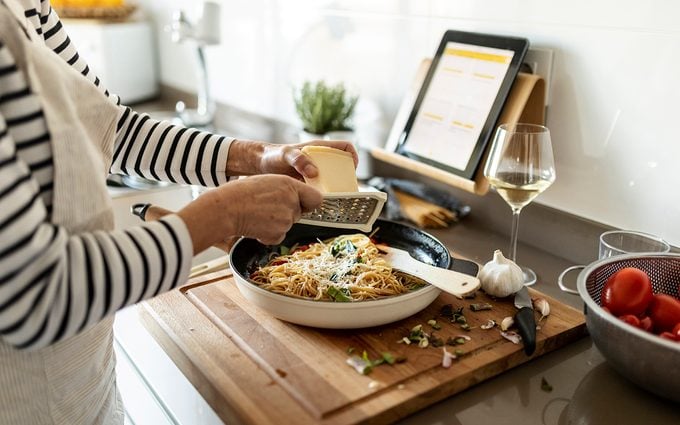
While the exact technique varies from sauce to sauce, there are a few best practices we suggest when making pasta sauce.
- Start with the right recipe. This may seem like a no-brainer, but it’s important to understand what kind of sauce you want to make before grabbing ingredients. Are you craving a sauce that’s tomato-based? Oil-based? Cream-based? Do you want to include meat, or extra veggies? These questions will guide you in the right direction. And if you’re still not sure, peruse our favorite homemade pasta sauce recipes for inspiration.
- Consider mise en place. Trust us—your cooking process will be a lot smoother if you follow this French technique. It means “everything in place” and instructs you to lay out all of your measured ingredients before turning on the stove. This way, you can focus on sautéing the garlic or blooming spices instead of searching for the measuring cups. Plus, you’ll know right away if you’re out of an ingredient. (We always need this tomato paste substitute!)
- Match your pasta to your sauce. There are so many shapes, sizes and styles of pasta to choose from, and most of them pair perfectly with a specific type of sauce. When it comes to which sauce goes with which pasta, here are a few classic options:
- Marinara sauce with spaghetti
- Clam sauce with linguine
- Alfredo sauce with fettuccine
- Vodka sauce with penne
- Cheese sauce with macaroni
- …and many more! Discover them in our guide to pasta shapes.
Pasta Sauce Tools
You’ll also need some proper tools to make pasta sauce. Here are a few must-haves.
- Large pot. Of all the sauce-making tools, this one is the most important. It needs to be large enough to hold a big batch of ingredients and sturdy enough for all-day simmering. We suggest a Dutch oven, which is a great all-around kitchen workhorse. (Don’t believe us? Try these Dutch oven recipes).
- Glass measuring cup. One of the secrets to better sauce is reserving some of your pasta cooking water. A glass measuring cup makes it easy to dip directly into the boiling pot.
- Spatula. You’ll need this tool to incorporate ingredients and give the sauce a stir. A heat-resistant (to 500° F) silicone spatula does the job. Bonus: It won’t scratch your cookware.
- Tasting spoon. A long-handled spoon is useful for tasting your sauce throughout the cooking process to make sure it’s properly seasoned.
- Ladle. It’s time to serve! A ladle makes it easy to spoon your sauce over hot cooked pasta.
Shop Now
Tips for Making the Best Pasta Sauce
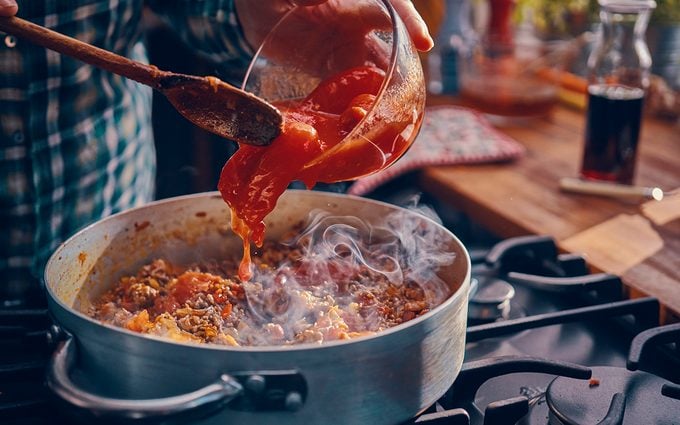
How can I make pasta sauce more interesting?
Make it your own! Pasta sauce is a great canvas for experimenting with different herbs, spices, seasonings or other flavoring agents. Try adding in different veggies, meats or types of seafood, too. There’s also nothing wrong with keeping it simple. This garlic butter sauce for pasta has just a few ingredients, but a ton of flavor.
If you’re looking to make a jar of spaghetti sauce taste better, just add more ingredients, like onion, garlic, red wine or herbs. You can also boost the flavor with a cooked meat, such as ground beef or Italian sausage. For step-by-step instructions, check out this guide to making store-bought sauce taste homemade.
Which pasta shape is perfect for chunkier sauces?
Pair a chunky sauce (like this zucchini pasta sauce) with a pasta shape that can collect those delicious hunks of meat, vegetables and tomato. Think shells, penne, rigatoni or ziti. If you want longer noodles, consider a variety with ridges that can help hold on to the sauce, like mafaldine or fusilli. This orecchiette pasta recipe is also a great option.
What is the secret ingredient for spaghetti sauce?
Tomatoes! It’s the main ingredient, but there are many different types of tomatoes to choose from and each one will give your sauce a unique flavor. There’s also the matter of choosing fresh vs. canned tomatoes, which will impact both the flavor and the texture, especially when you’re setting out to make a simple pasta sauce.

